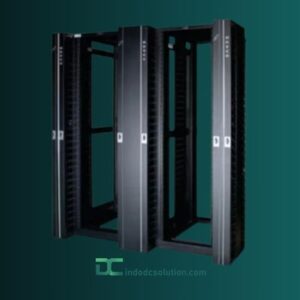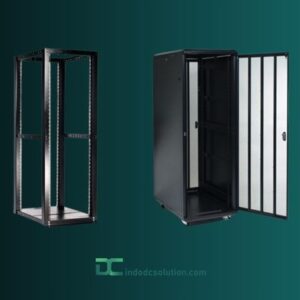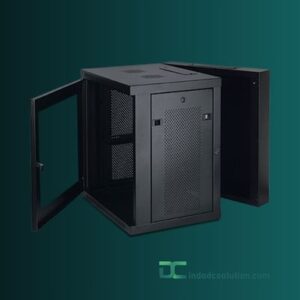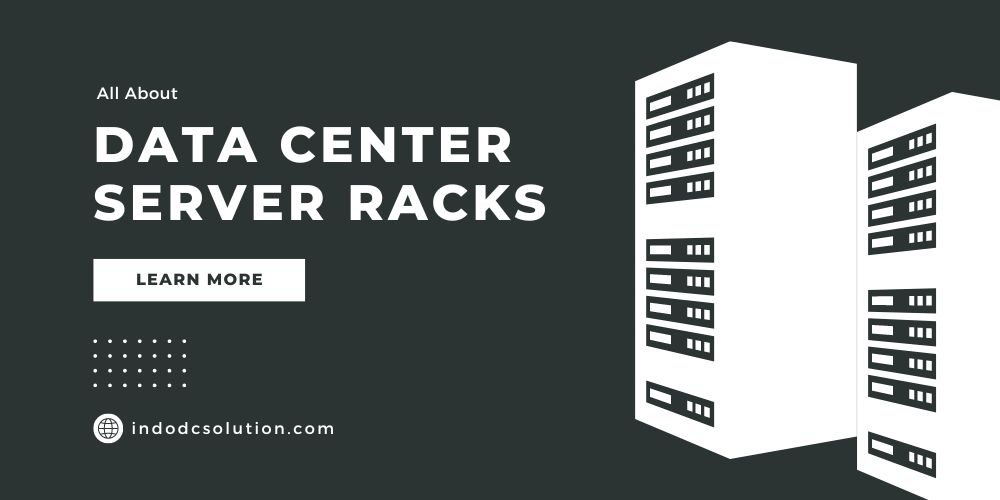In the contemporary era of digital technology, possessing a dependable and effective server rack is imperative for businesses across various scales. A well-structured data center server racks not only guarantees the seamless operation of your IT infrastructure but also plays a pivotal role in safeguarding essential data and equipment.
Given the multitude of server rack options in the market, the task of selecting the most suitable one for your requirements can be daunting. However, there’s no need to worry.
This extensive guide will walk you through all the necessary details for choosing the optimal data center server racks for your business.
Understanding Server Racks
Before delving into the assortment of available server racks, let’s commence by comprehending the essence of a server rack. Essentially, a server rack is a metal enclosure meticulously crafted to securely house servers, networking equipment, and other IT devices. It furnishes an orderly and centralized space for these components, facilitating efficient cable management, easy access, and proper ventilation.
What Constitutes a Server Rack?
A server rack is essentially a framework incorporating mounting slots known as rack units (U), standardized at 1.75 inches (44.45 mm) in height. This structure empowers IT professionals to vertically stack their equipment, optimizing space and ensuring tidiness and accessibility.
Depth is another crucial consideration when it comes to server racks. The depth of a server rack determines its capacity to accommodate equipment. Some server racks feature adjustable depth options, providing flexibility for accommodating various equipment sizes.
Moreover, server racks often include supplementary features such as cable management arms, contributing to organized cable layouts and preventing entanglements. These arms can be effortlessly adjusted to suit diverse cable lengths, ensuring a well-organized and clutter-free setup.
Significance of a Server Rack in Your IT Infrastructure
Possessing a server rack holds paramount importance for several reasons. Firstly, it establishes a secure and organized environment for IT equipment, minimizing the risk of damage and enhancing longevity. The robust metal construction of server racks shields sensitive components from physical harm, such as unintentional bumps or knocks.
In addition to physical protection, server racks incorporate enhanced security features. Many server racks are equipped with lockable doors and side panels, enabling restriction of access to authorized personnel exclusively. This measure mitigates the risk of unauthorized tampering or theft of valuable equipment and data.
Furthermore, a server rack facilitates efficient airflow and cooling, averting overheating and ensuring optimal performance. The rack design integrates vents and fans to promote adequate air circulation, dissipating heat generated by the equipment. This maintenance of a stable operating temperature prevents potential hardware failures due to overheating.
Lastly, systematic cable management within a server rack diminishes the likelihood of cable tangling or accidental disconnection, simplifying troubleshooting and maintenance. Cable management options like cable trays and routing channels ensure each cable is neatly organized and labeled, reducing time and effort required for identifying and resolving connectivity issues.
In conclusion, a server rack stands as an indispensable component of any IT infrastructure, furnishing a secure, organized, and efficient solution for housing servers and other IT equipment. By investing in a quality server rack, one ensures the longevity and optimal performance of the IT infrastructure, streamlining maintenance and troubleshooting tasks.
Varieties of Data Center Server Racks
Now that we have laid a solid foundation, let’s explore the diverse types of server racks available in the market:
Open Frame Racks
 Open frame racks, as the name implies, lack doors or side panels. These racks are ideal for small businesses or environments with limited space, offering easy access from all sides. The open design facilitates excellent airflow, ensuring servers remain cool and perform optimally. This rack type is commonly used in server rooms or data centers where technicians require swift and convenient equipment access.
Open frame racks, as the name implies, lack doors or side panels. These racks are ideal for small businesses or environments with limited space, offering easy access from all sides. The open design facilitates excellent airflow, ensuring servers remain cool and perform optimally. This rack type is commonly used in server rooms or data centers where technicians require swift and convenient equipment access.
However, it’s crucial to note that open frame racks may not provide the same level of physical security or noise reduction as enclosed cabinet racks. Absence of doors or side panels makes it easier for unauthorized individuals to tamper with servers or access sensitive data. Additionally, the lack of enclosure means the generated server noise is not contained, which might be a concern in noise-sensitive office environments.
Enclosed or Cabinet Racks
 Contrarily, enclosed or cabinet racks are fully sealed with doors and side panels, offering heightened security and noise reduction. These racks find common usage in larger organizations or locations prioritizing physical security. The doors and side panels safeguard servers from unauthorized access and protect them from dust and environmental factors that could potentially damage the equipment.
Contrarily, enclosed or cabinet racks are fully sealed with doors and side panels, offering heightened security and noise reduction. These racks find common usage in larger organizations or locations prioritizing physical security. The doors and side panels safeguard servers from unauthorized access and protect them from dust and environmental factors that could potentially damage the equipment.
Moreover, the enclosed design of cabinet racks aids in reducing noise levels. Doors and side panels act as barriers, preventing the spread of server-generated noise throughout the surrounding area. This feature is particularly advantageous in office settings where maintaining a quiet working environment is crucial.
Nevertheless, it’s essential to consider that enclosed cabinet racks may not deliver the same level of airflow as open frame racks. The enclosed design constrains natural airflow, potentially resulting in higher temperatures inside the rack. Adequate ventilation and cooling systems are necessary to ensure servers operate within the recommended temperature range.
Wall-Mount Racks

Wall-mount racks are tailored for spaces where floor or floor-standing racks are impractical. These racks can be affixed to a wall, conserving valuable floor space. Wall-mount racks prove ideal for small offices, retail stores, or even home offices with space constraints.
Despite their compact size, wall-mount racks offer adequate storage capacity to accommodate a small number of servers and networking equipment. They often feature adjustable shelves or brackets to cater to different equipment sizes. Additionally, some wall-mount racks incorporate hinged or swing-out designs, facilitating easy equipment access for maintenance or upgrades.
It’s worth noting that wall-mount racks may not furnish the same level of security and environmental protection as larger cabinet racks. Being mounted on the wall exposes them more, making them susceptible to physical tampering or damage. Consequently, wall-mount racks are typically deployed in environments where security is not a primary concern.
As evident, various types of server racks are available, each catering to distinct needs and environments. Whether you prioritize easy access, heightened security, or space-saving solutions, there exists a server rack option to meet your requirements.
Key Considerations for Selecting a Server Rack
Choosing the appropriate server rack entails consideration of several key factors. Let’s examine these factors individually:
Size and Capacity
Determine the size and capacity requirements of your server rack. Evaluate the number of servers and networking equipment presently in use or anticipated in the future. Ensure the rack possesses sufficient rack units (U) and depth to accommodate your equipment without constraints.
Cooling and Ventilation
Proper cooling and ventilation are pivotal for optimal server and networking hardware performance. Seek data center server racks offering ample airflow, whether through built-in fans, vents, or perforated doors and side panels. These features ensure equipment remains cool, minimizing the risk of overheating.
Accessibility and Mobility
Evaluate how easily you can access your equipment within the server rack. Choose racks providing front and rear access, facilitating convenient maintenance and troubleshooting. If mobility is crucial in your setting, opt for server racks equipped with casters or wheels, enabling easy movement when required.
Material and Durability
The material and build quality of the server rack are integral in ensuring longevity and robustness. Look for racks constructed from high-quality materials like steel or aluminum, offering durability and resistance to wear and tear. Additionally, check for features such as adjustable mounting rails or reinforced frames for added stability.
Server Rack Accessories and Enhancements
Having selected the ideal server rack, it’s time to explore essential accessories and add-ons that can enhance functionality:
Shelves and Drawers
Shelves and drawers serve as valuable additions to your server rack, facilitating the organized arrangement of smaller devices, tools, or documentation. Consider adjustable shelves and lockable drawers for increased flexibility and security.
Cable Management Accessories
Cable management is a critical aspect of maintaining an orderly server rack. Invest in cable management accessories such as cable trays, cable managers, or cable ties to keep wires and cables organized and easily traceable.
Power Distribution Units (PDUs)
A power distribution unit (PDU) distributes electrical power to multiple devices within a server rack. Select PDUs with surge protection, remote management capabilities, and sufficient power outlets to meet your equipment’s power requirements.
In Conclusion
Choosing the perfect server rack for your business demands thoughtful consideration. By comprehending the diverse types of data center server racks available and evaluating key factors like size, cooling, accessibility, and material quality, you can ensure the ideal fit for your IT infrastructure needs.
Additionally, investing in crucial server rack accessories and add-ons, such as shelves, cable management solutions, and power distribution units, can further augment the functionality and organization of your server rack.
Equipped with this comprehensive guide, you are now well-prepared to make an informed decision and select the perfect server rack to support your business’s IT needs over the long term.

